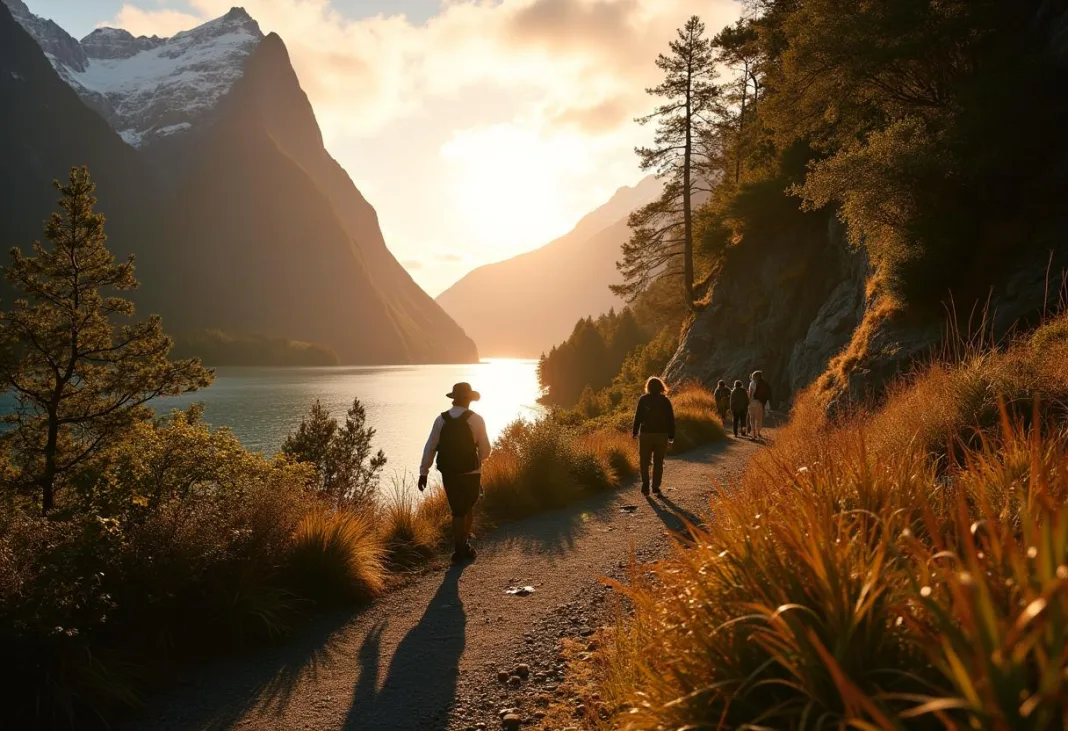Wednesday, August 6, 2025

In a bold move to support its conservation efforts, New Zealand has proposed new fees for tourists visiting its iconic natural landmarks like Te Whanganui-a-Hei (Cathedral Cove), Tongariro Crossing, Aoraki Mount Cook, and Milford Sound. The proposed fee system could charge visitors between NZ$20 and NZ$40 per site (approximately USD 12 to 25). This idea has sparked both excitement and controversy, with some local environmental groups expressing concerns. The government aims to use the funds generated by these fees to improve conservation efforts and ensure the protection of its natural wonders.
Currently, the proposal is under review by national authorities. While the plan focuses on international visitors, it has sparked discussions about its potential effects on tourism, the environment, and local communities. Although this initiative is in its early stages, it is part of broader conservation law reforms that could significantly affect New Zealand’s environmental policies.
Understanding the Proposed Fees
The proposed fees target tourists who visit some of New Zealand’s most famous natural sites. These charges would apply to the following locations:
- Te Whanganui-a-Hei (Cathedral Cove)
- Tongariro Crossing
- Aoraki Mount Cook
- Milford Sound
Each site would charge between NZ$20 and NZ$40 to raise money for conservation efforts. Visitors will be expected to pay these fees upon arrival, with a portion going toward site upkeep, infrastructure improvements, conservation programs, and sustainable tourism initiatives.
Who Will Be Affected by the Fees?
The new fees will only apply to international visitors, who make up about 80% of the total visitors to these sites each year. This proposal has raised eyebrows among tourism stakeholders because it excludes local New Zealand residents from the fees. This approach aims to ensure that New Zealanders can continue to explore their natural heritage without additional costs while tourists help maintain and protect these wonders.
This distinction between local and international visitors has led to mixed reactions. Supporters of the fee believe it will help fund essential conservation efforts without overburdening locals. Critics, however, worry it could discourage international visitors and harm New Zealand’s reputation as an eco-tourism destination, particularly as sustainability becomes more important to travelers worldwide.
The Goal of the Fees: Supporting Conservation Efforts
The fees are part of a larger effort to improve New Zealand’s conservation land, which makes up around 30% of the country’s total area. While conservation land is publicly owned and protected, recent reforms have made it easier for private individuals or companies to buy or lease this land. This has raised concerns among environmentalists, who fear that such changes could lead to over-commercialization and lessen protection against exploitation.
The fees aim to address these concerns by creating a new revenue stream for conservation projects. The goal is to reinvest the raised funds into improving conservation corridors, expanding protected areas, and ensuring the long-term health of New Zealand’s unique plants and animals.
However, controversy arises because these fees, which seem similar to sustainable tourism initiatives like Hawaii’s green tourist tax, have faced criticism for potentially making some of New Zealand’s pristine natural areas more accessible to commercial interests. This raises fears of further privatization of conservation lands.
The Debate: Is This a Sustainable Solution?
The introduction of tourist fees for natural landmarks has elicited strong reactions, particularly from environmental protection groups in New Zealand. These groups are worried that the government’s broader approach to conservation could inadvertently lead to increased commercialization of the country’s natural spaces. The concern is that the fees might be part of a trend toward privatizing access to public lands, which could undermine the essence of conservation.
Additionally, some critics argue that the fees may not effectively tackle the root issues of environmental harm, such as over-tourism, pollution, and the strain on infrastructure at popular sites. They believe the government should focus on broader, sustainable tourism management strategies, such as limiting visitor numbers to vulnerable sites or enforcing stricter regulations on tourism operators.
The Role of Tourism in New Zealand’s Economy
New Zealand’s tourism industry is a major economic driver, significantly contributing to the nation’s GDP. The country is known for its stunning landscapes, outdoor adventures, and eco-tourism options, making it a top spot for nature enthusiasts. The government has long recognized the challenge of balancing tourism with conservation, and these new fees are an attempt to find that balance.
However, with the rise of eco-conscious travelers globally, New Zealand faces pressure to maintain its commitment to sustainability while still attracting visitors. Tourism operators will need to adapt to these changes. Some may view the new fees positively, seeing them as a way to keep popular sites accessible and preserved for future generations.
Conclusion: A Fine Balance Between Conservation and Tourism
As New Zealand moves forward with the proposed fees for tourists at its famous natural landmarks, maintaining the balance between conservation and tourism remains delicate. The fees are intended to support vital environmental efforts and protect New Zealand’s natural wonders for future generations. However, they raise questions about the role of private interests in public lands. It remains to be seen if the country’s conservation model is truly sustainable in the long run.
For travelers, these new fees may change how they experience New Zealand’s natural beauty. Whether this will deter visitors or foster more responsible, eco-friendly travel is unclear. What is certain is that New Zealand is at a crossroads, and how it navigates this initiative may set an example for other nations facing similar challenges in sustainable tourism in the 21st century.
(Source: New Zealand Government, New Zealand Ministry of Conservation, New Zealand Tourism Board)







